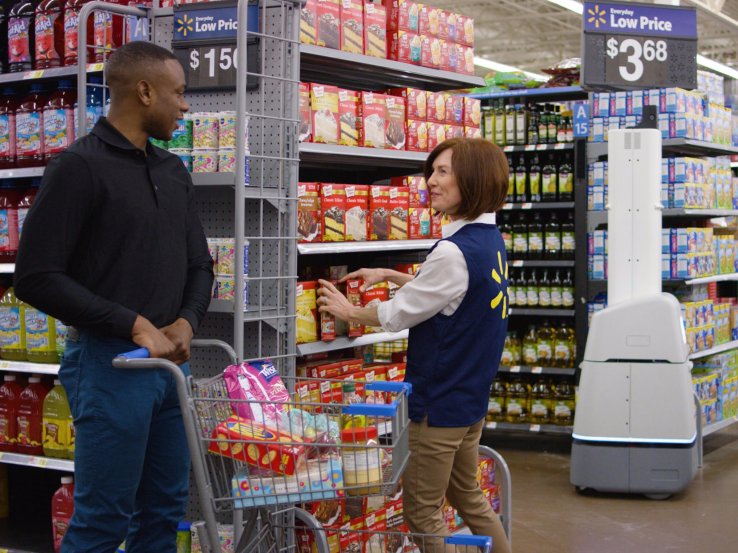Walmart is rolling out shelf-scanning robots in stores, but says they won’t replace people

Any automation evangelist will tell you that the goal of industrial robotics is to replace work that’s “dull, dirty and dangerous.” As someone who’s worked a fair number of retail gigs, I can tell you that inventory falls squarely into the first category. Walmart employees likely won’t miss out on that bit as the mega-retailer begins rolling out shelf-scanning robots to more than 50 stores across the U.S.
The two-foot tall robots are pretty innocuous looking — they’re basically rolling gray boxes with a large arm up top that sports on-board cameras. The arm scans the shelves, looking for sold-out, missing or misplaced items. It’s also able to identify when product is priced incorrectly. That information is then sent to a human co-worker, whose job it is to re-stock, re-price or re-order.
The company’s U.S. CTO Jeremy King tells Reuters that the company won’t actually be replacing any human employees with the robots. Headcount in stores will stay the same, with the robots augmenting the work of blue-vested human employees. According to King, the robots are 50 percent more product than people when it comes to the task at hand. The robots are also able to perform the job constantly, versus existing employees who only have the chance around twice a week.
Of course, single-purpose robots are generally not equipped to replace humans altogether, but Walmart is certainly making a big push to embrace technology on a much larger scale, as it attempts to stay competitive with the 800-pound online gorilla that is Amazon. As we noted recently, the company has been buying up startups as a brisk pace, and this move echoes the competition’s big push when it transformed Kiva Systems into Amazon Robotics.
Amazon’s robots have, to this point, been focused on speeding up warehouse and shipping logistics. Walmart’s new ‘bots were initially tested in California, Arkansas and Pennsylvania, will provide an interesting public-facing insight into the ways humans and robots can work together.